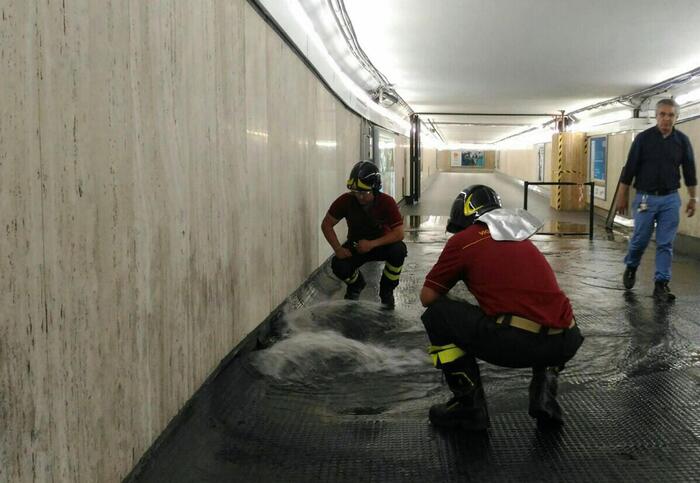42.4% of drinking water is still lost in Italian water networks: this is underlined by Istat on the basis of 2022 data, explaining that in 2022 the water dispersed in municipal drinking water distribution networks would satisfy the water needs of 43.4 million people for an entire year.
The dispersion data is worse than that of 2020 (42.2%).
The municipal distribution networks supply 214 liters of drinking water per inhabitant every day (36 liters less than in 1999) for authorized uses.
In 2023, the share of families who do not trust drinking tap water is at 28.8% (stable compared to 2022).
In 2022, the volume of water withdrawn for drinking use in Italy is equal to 9.14 billion cubic metres, used to ensure the daily water uses of the population, but also of small businesses, hotels, services, commercial, productive and agricultural activities and industrial connected directly to the urban network, as well as public requests (schools, public offices, hospitals, fountains, etc.).
The daily withdrawal of 25.0 million cubic metres, equal to 424 liters per inhabitant, is made possible by a dense supply network (approximately 37,400 active sources for drinking water uses).
The slow and modest contraction in withdrawal volumes recorded starting from 2018 continues. Although the volume withdrawn in 2022 decreased by 0.5% compared to 2020 (-4% compared to 2015), Italy is reconfirmed - for over a twenty years - in first place in the European Union for the quantity, in absolute value, of fresh water withdrawn for drinking use from surface or underground water bodies (therefore excluding withdrawals from marine waters).
Among the EU27 countries in the Mediterranean area, Italy is among those that use groundwater the most, taken from wells and springs, to satisfy the drinking needs of the population.
In per capita terms, the gap between the EU27 countries is wide and Italy - with 155 cubic meters per year per inhabitant - is in third position, preceded only by Ireland (200) and Greece (159), and followed at a clear distance from Bulgaria (118) and Croatia (111).
Most Member States (20 out of 27) withdrew between 45 and 90 cubic meters of fresh water per person for public supply.
Although 2022 was the warmest and least rainy year since 1961, the withdrawal for drinking purposes does not appear to have undergone, overall, significant variations, despite the fact that at a local level, in some cases, important critical issues were recorded in certain periods of the year.
In 2023, the share of families complaining about irregularities in the water supply service in their homes is equal to 8.9% and is slightly decreasing compared to 2022 (9.7%).
The disservice affects the regions in very different percentages and affects approximately 2 million 300 thousand families;
among these, over two thirds live in the South (1.6 million families).
Calabria (38.7% of families) and Sicily (29.5%) are the regions most exposed to water supply problems in homes.
In 2023, the share of people aged 11 and over who consume at least half a liter of mineral water per day is equal to 81.8% and is essentially unchanged compared to 2022. The highest consumption of mineral water is recorded in the North-West (87.2%) and in the Islands (84.8%), the lowest in the South (74.3%).
In particular, at a regional level, Umbria maintains the record in mineral water consumption (90.3%), while in the Autonomous Province of Bolzano/Bozen the minimum value is recorded (59.3%).
Basilicata is the worst for water losses
Emilia Romagna is the Italian region that loses the least drinking water in its water networks with 29.7%, followed by Valle d'Aosta with 29.8% while the worst is Basilicata with 65.5%, followed from Abruzzo with 62.5%: this is what we read in the tables of the Istat Report on water statistics referring to 2022. Overall, water losses of drinking water in Italy are at 42.4%.
If we look at the provincial capitals, the worst is Potenza (71%).
"In more than one capital out of three - we read - there are total losses in distribution exceeding 45%.
The conditions of maximum criticality, with values equal to at least 65%, are in Potenza (71.0%), Chieti (70.4%), L'Aquila (68.9%), Latina (67.7%) , Cosenza (66.5%), Campobasso (66.4%), Massa (65.3%), Siracusa (65.2%) and Vibo Valentia (65.0%).
A more favorable infrastructural situation, with losses of less than 25%, occurs in approximately one in four capital cities.
Losses of less than 15% were found in seven cities: Como (9.2%), Pavia (9.4%), Monza (11.0%), Lecce (12.0%), Pordenone (12.1%) , Milan (13.4%) and Macerata (13.9%)". In Rome the losses are 27.9%.
Reproduction reserved © Copyright ANSA

